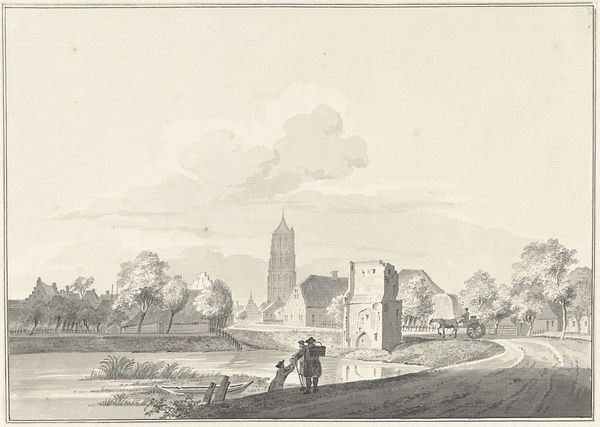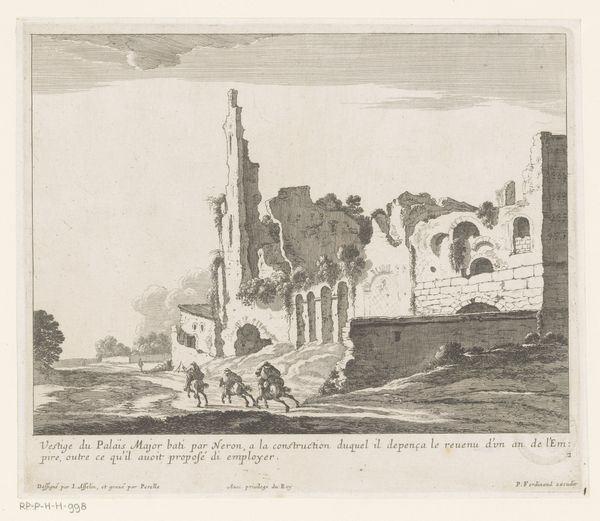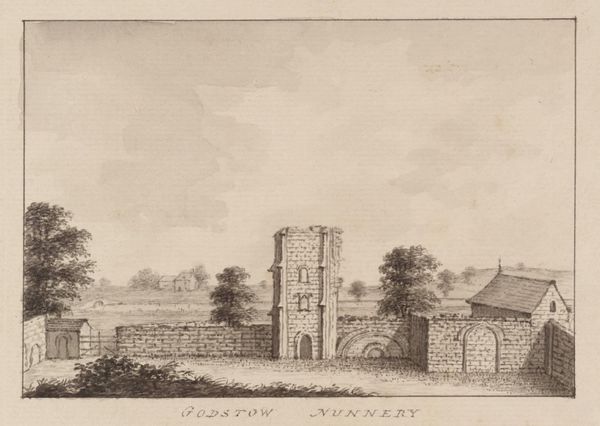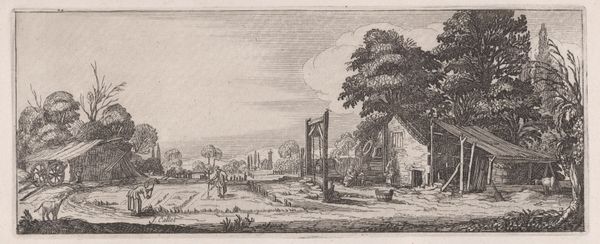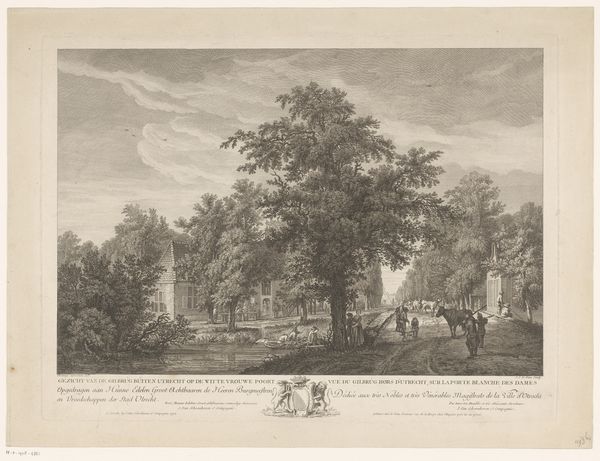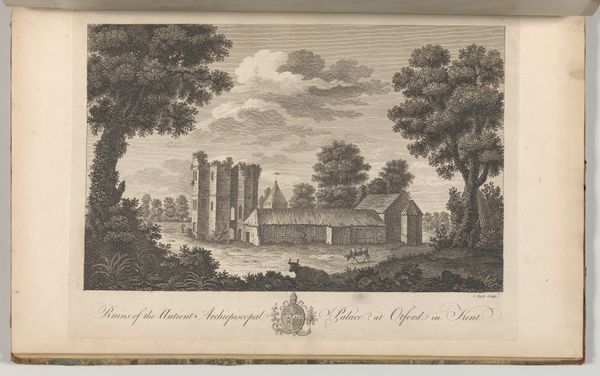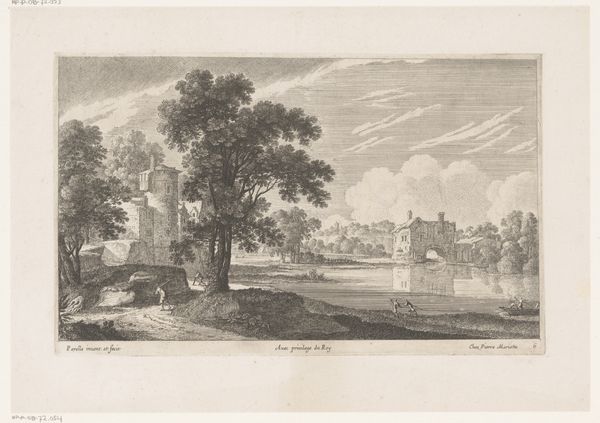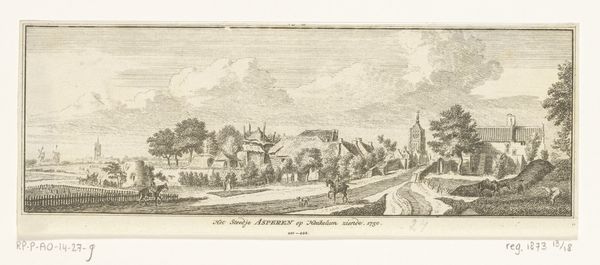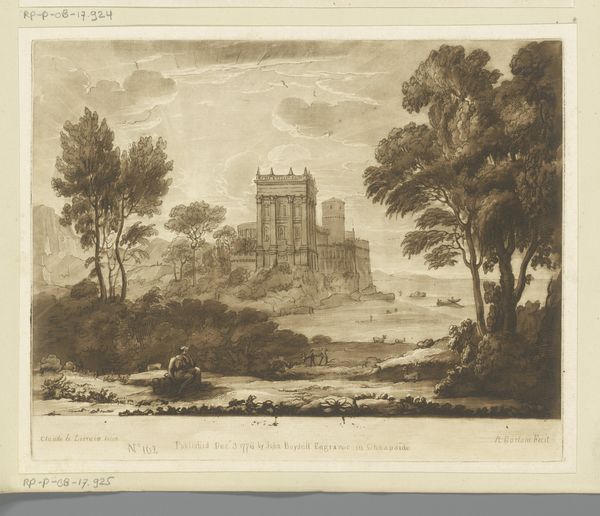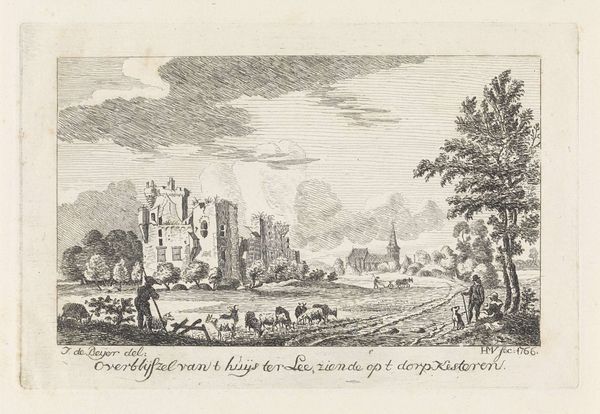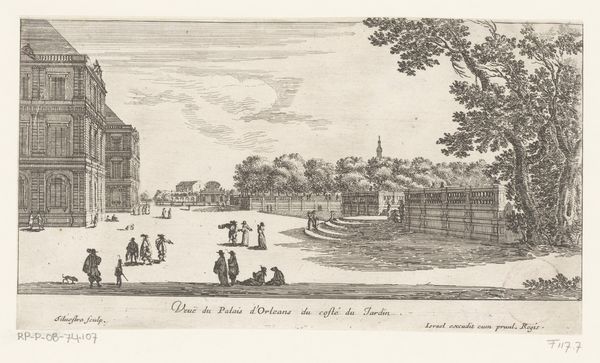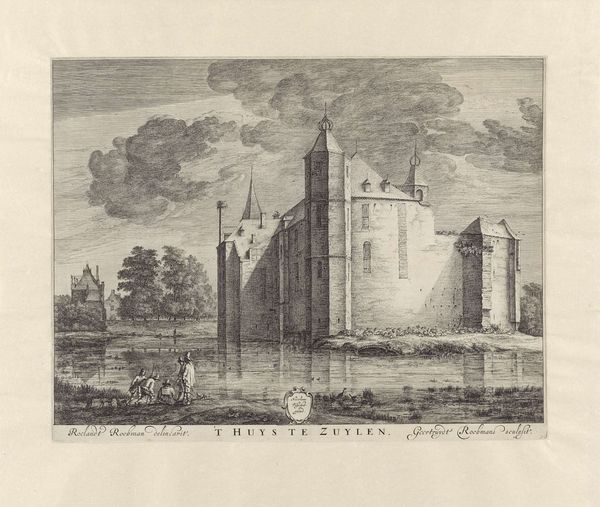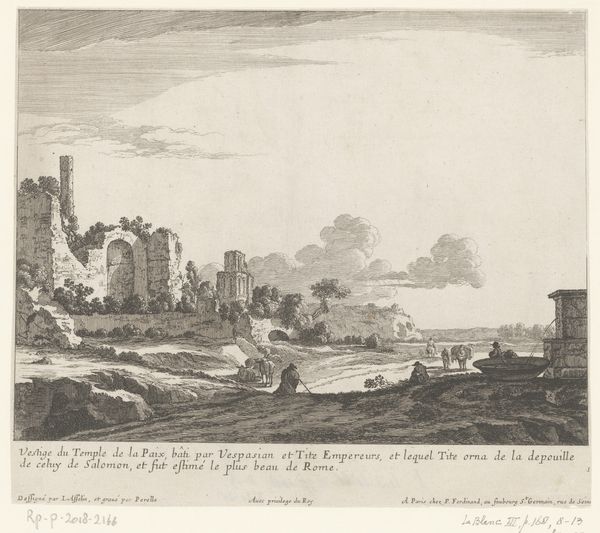
Dimensions: height mm, width mm
Copyright: Rijks Museum: Open Domain
Hendrik Spilman created this print of the ruins of Egmond Castle sometime in the 18th century using etching, a printmaking technique that relies on acid to bite into a metal plate. The delicate lines and shading you see are the result of a labor-intensive process. Spilman would have coated a copper plate with a waxy, acid-resistant ground, then carefully drawn his composition into the wax with a sharp needle, exposing the metal beneath. The plate was then submerged in acid, which etched the exposed lines, creating grooves in the metal. After removing the wax, the plate would be inked, and then wiped clean, leaving ink only in the etched lines. Finally, it would be pressed onto paper, transferring the image. Consider the skilled hand and eye required to create such detail. The printmaking process, involving meticulous labor and technical expertise, elevates the status of this seemingly simple landscape view. It reminds us that even in depictions of decay, there's a story of human ingenuity and effort.
Comments
No comments
Be the first to comment and join the conversation on the ultimate creative platform.
